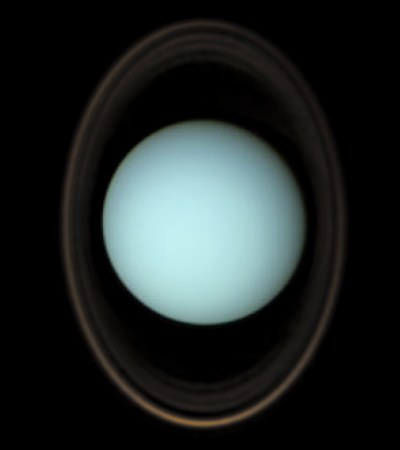
| Orbital Elements | ||
| Mean distance from Sun | 2,870,990,000 km | = 19.1914 astronomical units |
| Perihelion distance | 2,741,300,000 km | = 18.3245 astronomical units |
| Aphelion distance | 3,003,620,000 km | = 20.078 astronomical units |
| Eccentricity of orbit | 0.0461 | |
| Inclination of orbit | 0.774° | relative to Earth's orbit |
| Period of orbit | 84.01 years | |
| Synodic period | 370 days | relative to Earth |
| Mean orbital speed | 6.81 km/s | |
| Minimum orbital speed | 6.49 km/s | |
| Maximum orbital speed | 7.11 km/s | |
| Physical Properties | ||
| Mean diameter | 50,724 km | = 4 Earth diameters |
| Equatorial radius | 25,559 km | |
| Oblateness | 1/45 | |
| Mass | 8.686 x 1025 kg | = 14.535 Earth masses |
| Mean density | 1.29 g/cm3 | |
| Rotational period | 17.9 hours | |
| Inclination of axis | 97.86° | relative to the axis of its orbit |
| Gravity at cloud tops | 7.77 m/s2 | |
| Escape speed | 21.3 km/s | from cloud tops |
| Visual geometric albedo | 0.51 | |
| Visual magnitude (Vo) | 5.52 | maximum, as seen from Earth |
| Mean visible cloud temperature | -193°C | |
| Atmospheric pressure | 1.2 bars | at cloud tops |
| Atmospheric Composition | |
| Hydrogen (H2) | 83% |
| Helium (He) | 15% |
| Methane (CH4) | 2% |
Moons
![]()
Five medium-size moons and more than 20 small moons.
 To my Space and Science home page
for more about the Solar System
To my Space and Science home page
for more about the Solar System
Jeff Root
October 12, 2003